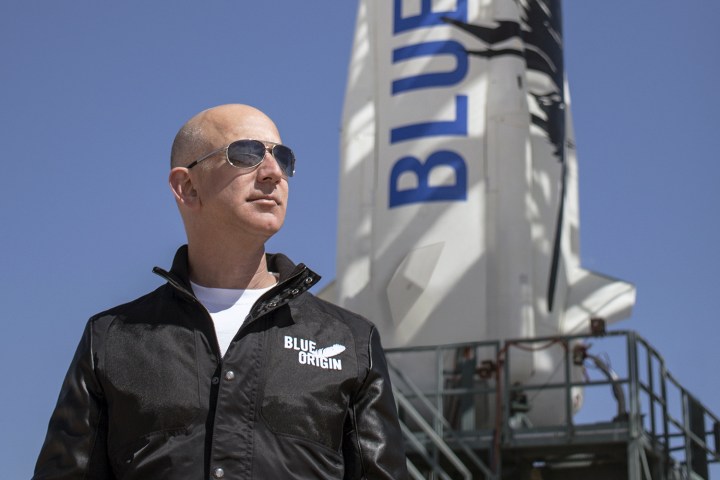
Jeff Bezos is heading to space on July 20. And he’s taking his brother with him.
The Amazon founder will hurtle skyward aboard a New Shepard rocket operated by his private space company, Blue Origin.
Traveling with Jeff and brother Mark will be a third person decided by a charity auction that’s set to conclude at the end of this week. The highest bid currently stands at $2.8 million.
Billionaire Bezos used Instagram to announce the surprise news of his plan to be part of next month’s space trip, the first crewed mission by Blue Origin following 14 successful test flights since 2015.
“Ever since I was five years old, I’ve dreamed of traveling to space,” Bezos wrote in the post. “On July 20th, I will take that journey with my brother. The greatest adventure, with my best friend.”
In a video accompanying the post, the Amazon boss said, “To see the Earth from space, it changes you. It changes your relationship with this planet, with humanity. It’s one Earth. I want to go on this flight because it’s a thing I’ve wanted to do all my life. It’s an adventure, it’s a big deal for me.”
The video also includes a clip of Bezos asking his brother — a volunteer firefighter and former advertising executive — if he wants to join him on the trip of a lifetime.
“I wasn’t even expecting him to say that he was going on the first flight,” Mark says in the video before describing his brother’s offer as “a remarkable opportunity.”
Space tourism
Blue Origin is aiming to launch regular space tourism services in the near future, and Bezos’ flight will be the first chance to show exactly what paying customers can expect. Other companies such as Virgin Galactic and SpaceX are exploring the same market, though SpaceX’s planned flights are more complex and involve more sophisticated rocket technology.
So what exactly is in store for Bezos and his two crewmates on July 20?
Seated inside a capsule atop the New Shepard rocket, the three crew members will start their journey by blasting off from Blue Origin’s spaceport in West Texas. Partway up, the capsule will separate from the rocket and continue on toward the Kármán line, an altitude of about 62 miles that’s generally considered as the edge of space. Besides the amazing views of Earth, the trio will be able to climb out of their seats and experience a short period of weightlessness.
Once safely strapped in their seats again, the capsule will return to Earth for a parachute-assisted landing in the desert, a short distance from the launch site.
The entire experience from start to finish will last around 10 minutes. But they’ll be able to dine out on it for a lifetime
Editors' Recommendations
- SpaceX shares awesome rocket imagery from Starship flight
- SpaceX’s mighty Starship rocket stacked for 3rd test flight
- Blue Origin’s heavy-lift New Glenn rocket raised on launchpad for first time
- See how Blue Origin’s rocket did in first flight since 2022 explosion
- How to watch Blue Origin’s rocket return to flight


